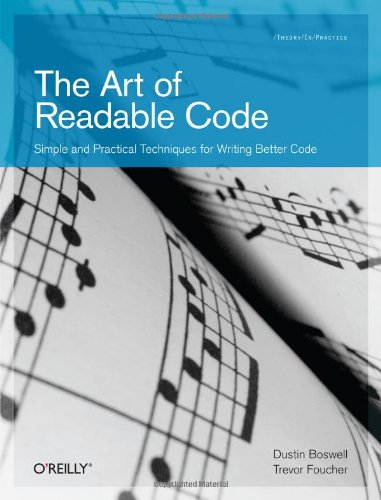The Art of Readable Code - Key Ideas
in
Here are a number of the “Key Ideas” I pulled from my reading of The Art of Readable Code by Dustin Boswell and Trevor Foucher.

- Code should be easy to understand.
- Code should be written to minimize the time it would take for someone else to read it.
- Pack information into your names.
- It’s better to be clear and concise than to be cute.
- Actively scrutinize your names by asking yourself, “what other meanings could someone interpret from this name?”
- kConstantName
- MACRO_NAME()
- Use inclusive limits
- kMaxItems – if (x < kMaxItems)…
- first and last – where last is the last element; set(x=first, y=last)
- begin and end – where end is past the last element; for (i = begin; i < end; i++)
- Booleans - isX, hasY, canZ, shouldP – don’t use negated names, e.g. disable_ssl.
- Consistent style is more important than the “right” style. Match existing style!
- The purpose of commenting is to help the reader know as much as the writer did.
- Don’t comment on facts that can be derived quickly from the code itself.
- good code > bad code + good comments
- Use common comment prefixes
* TODO: stuff I have not gotten to yet
- FIXME: known broken code (fix for release)
- HACK: admittedly an inelegant solution
- XXX: DANGER! there is a major problem here
- Comments should have a high information to space ratio
- Make all conditionals, loops, and other changes to flow as natural as possible – written in a way that doesn’t make the reader stop and read your code.
* left side = value being interrogated, the one that changes more frequently
- right side = the more constant value * ex. bytes_read <= bytes_expected
- Instead of minimizing the number of lines, a better metric is to minimize the time needed to understand it.
- Look at code from a fresh perspective when you’re making changes. Step back and look at is as a whole.
- Break down your giant expressions into more digestible pieces.
- Beware of clever nuggets of code – they’re often confusing when others read the code later.
- Make variables visible for as few lines of code as possible.
- The more places a arable is manipulated, the harder it is to reason about its current value.
- Code should be organized so that it’s doing only one task at a time.
- The most readable code is NO CODE AT ALL.
- Test code should be readable so that other coders are comfortable changing or adding tests.
- You should pick the simplest set of inputs that completely exercise code.
- Prefer clean and simple test values that still get the job done.
These are merely the notes I took. They are not meant to represent anything more than that. I highly recommend you read the book, it’s really good.